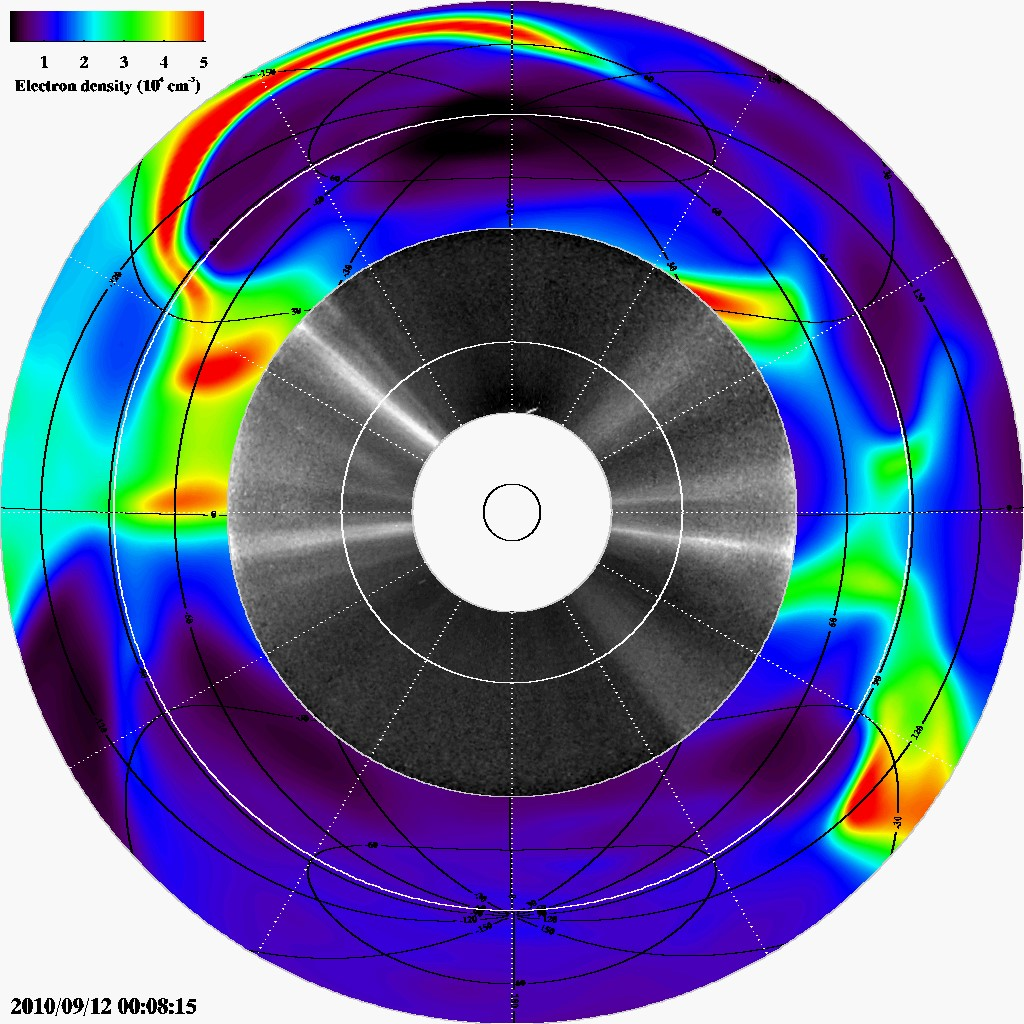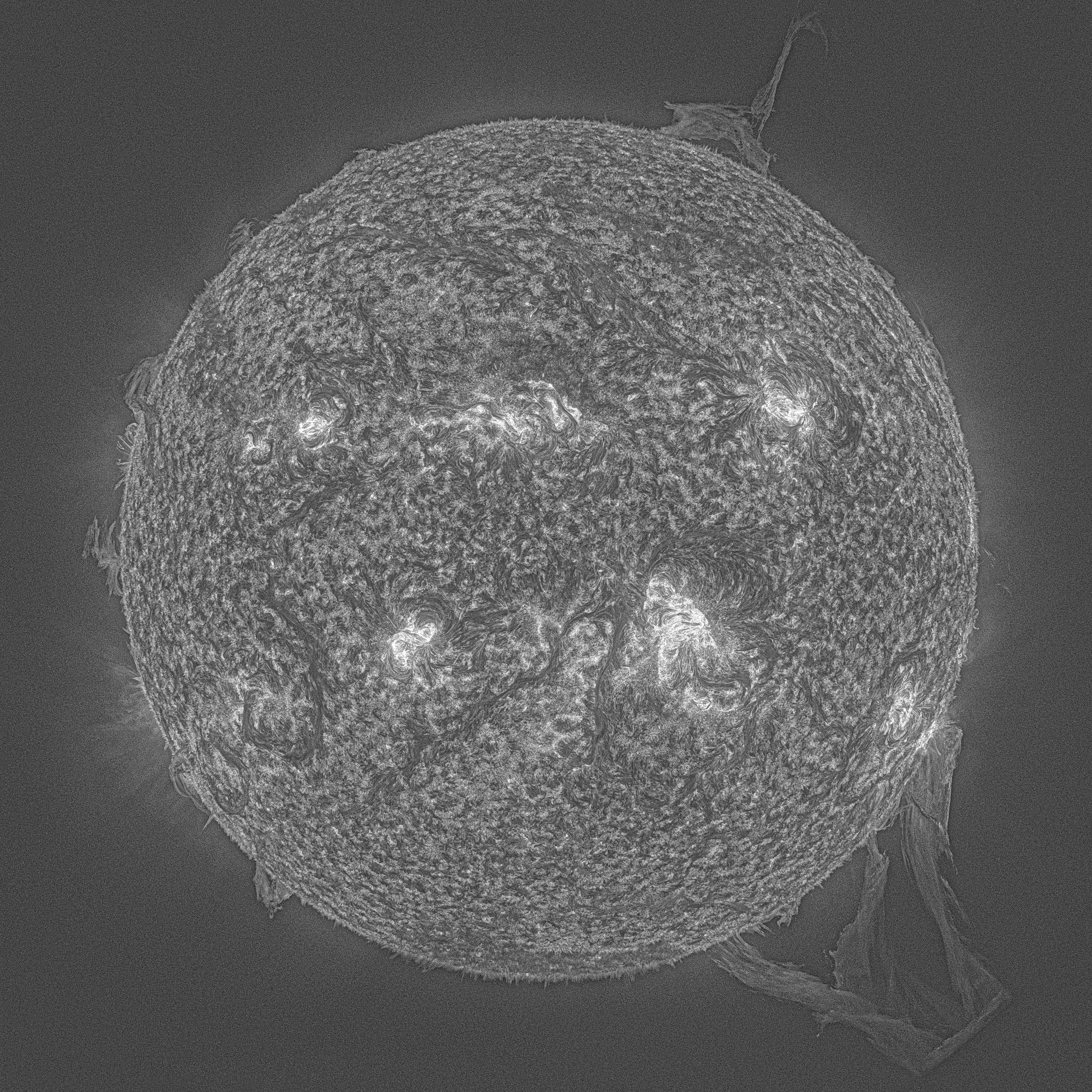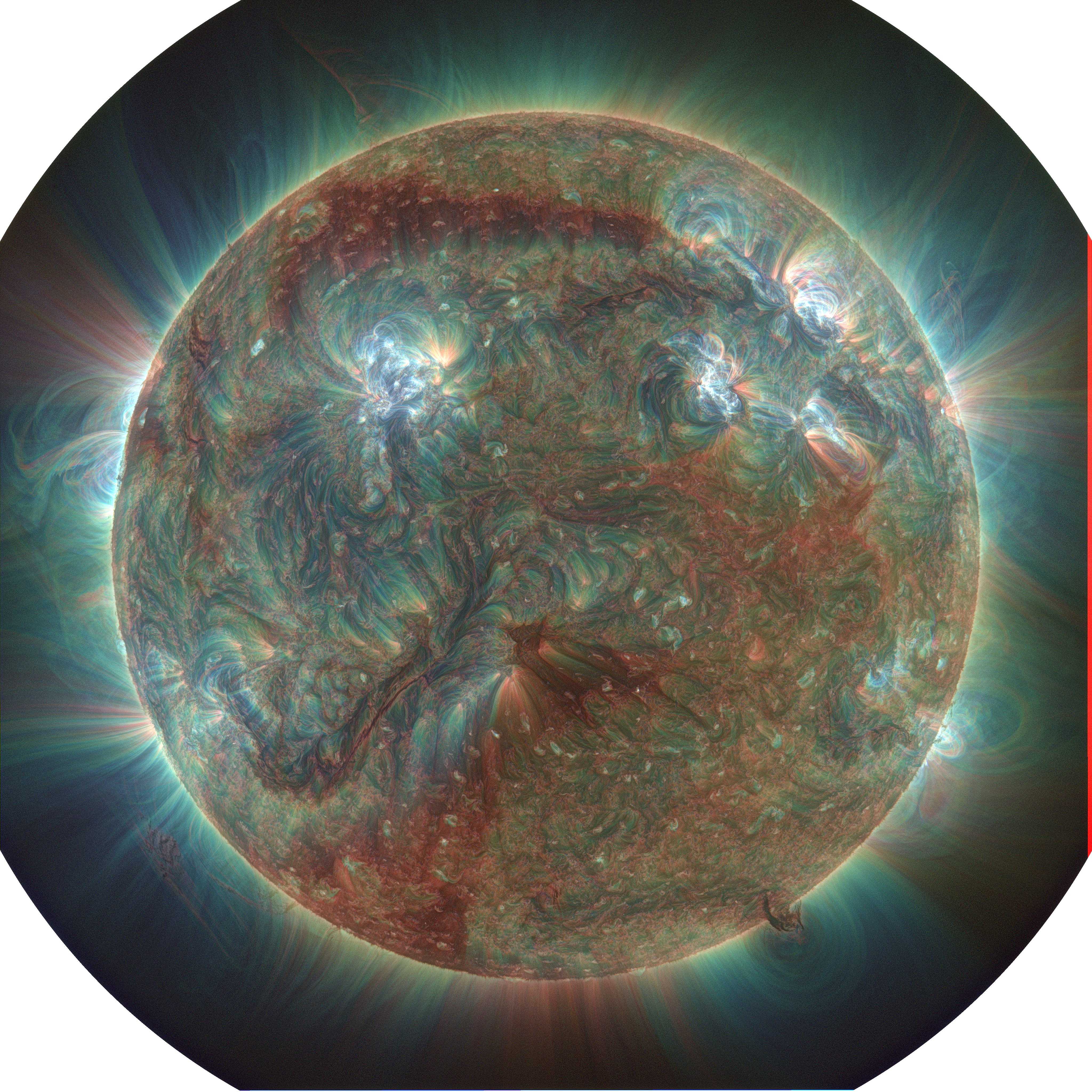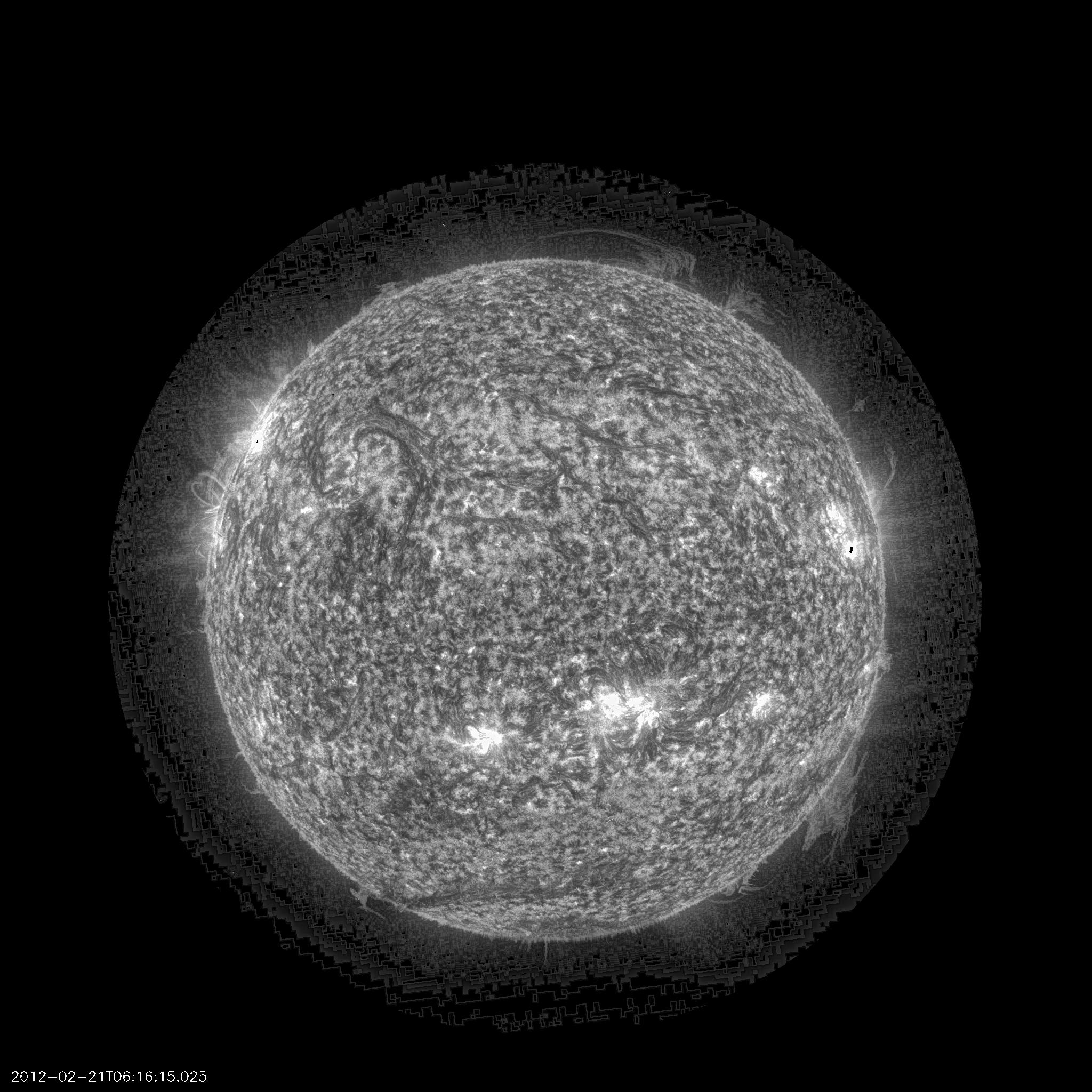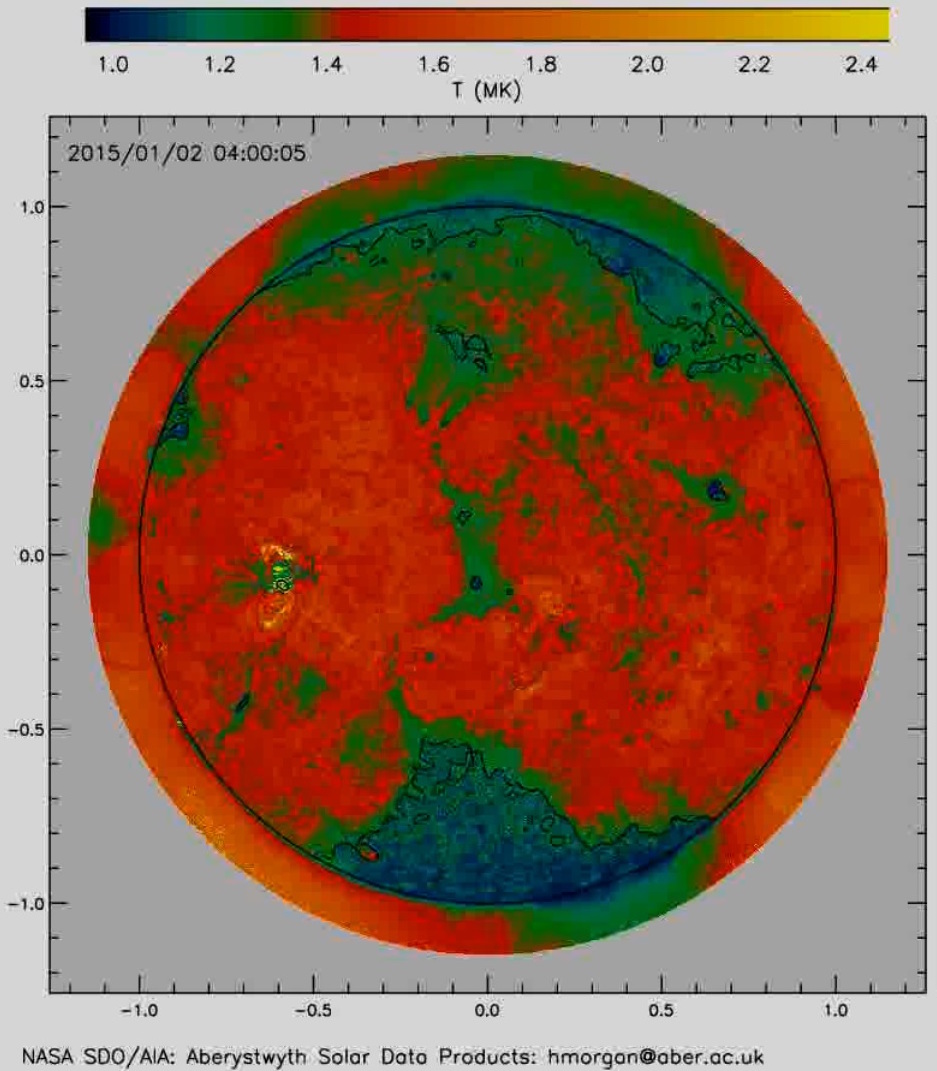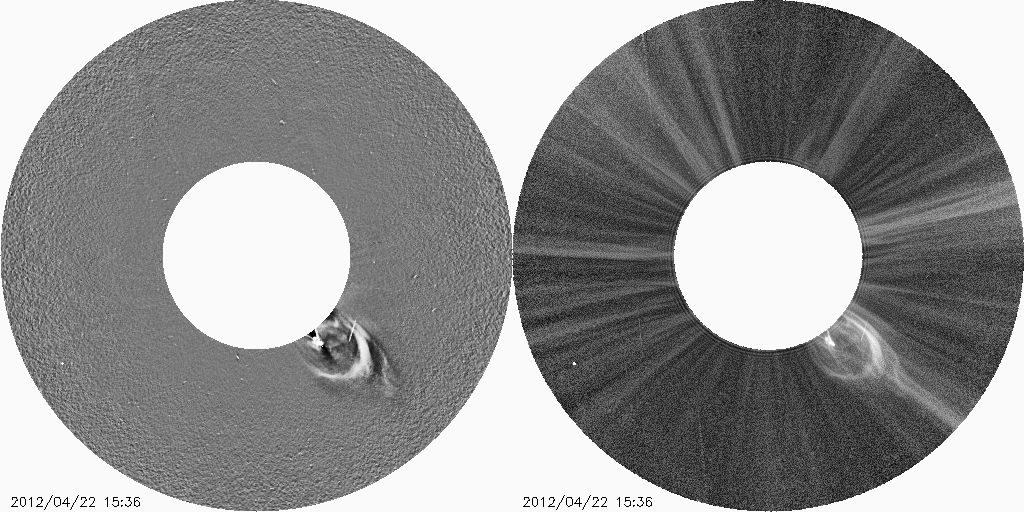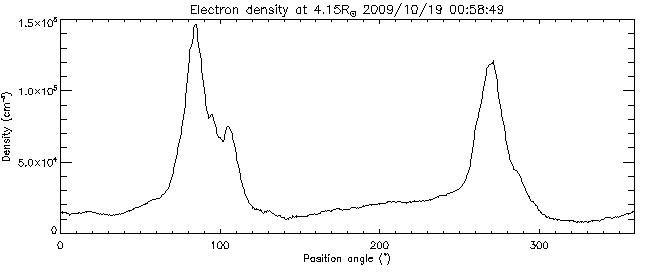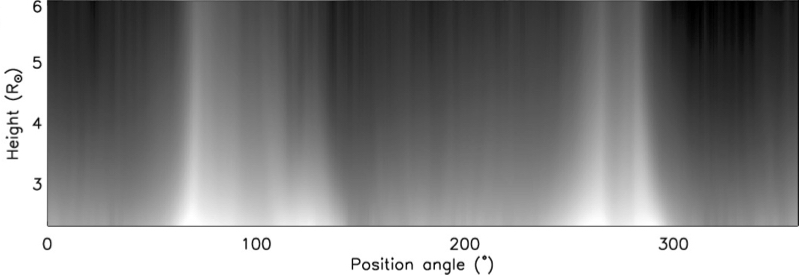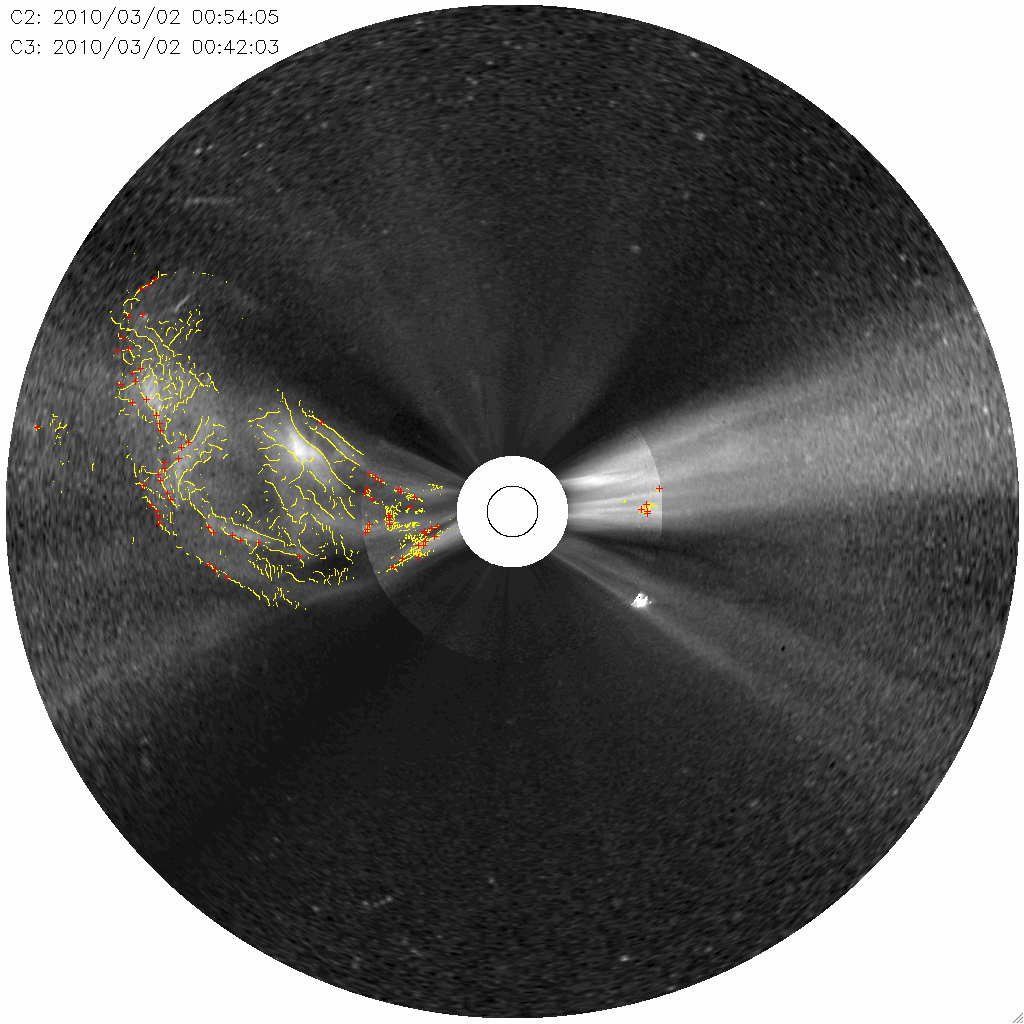3D Maps of the solar atmosphere
The Sun’s atmosphere flows into interplanetary space as the solar wind. Solar eruptions and streams of different speeds lead to rapid variations in this flow that impact Earth's magnetic field and can cause disruption to technology, economy and society - this is called space weather. Improved space weather forescasting depend critically on improving our understanding of the evolution of the solar wind near the Sun. Recent innovations in tomography techniques are opening a new window on this complex environment.
Coronagraphs on spacecraft take images of the extended solar atmosphere continuously. As the Sun slowly rotates (~every 4 weeks), the view of the corona changes. We use this information, using advanced methods, to derive the 3D structure of the corona's plasma. Thus the distribution of high and low density streams (corresponding to slow and fast flow speeds) is revealed. For the first time, this offers a direct mapping of the corona, and the ability to improve solar wind models that are central to predicting space weather.
Image: The Sun’s position is shown as the black inner circle. From 2 to 12 solar radii above the Sun, images are collected by coronagraph telescopes, as shown here in the black and white annular region above the Sun. The outer colour region shows the electron density of the solar atmosphere, gained from applying tomography to a time series of coronagraph observations.
Video: The changing structure of the solar corona over several years. This movie shows the electron density of the solar atmosphere at a height of 6 solar radii from the Sun, mapped in longitude and latitude. The movie begins during a period of minimum activity in 2009, to a period of maximum activity in 2012. During this time, we see high-density sheets (slow wind) gradually migrating to higher latitudes.
